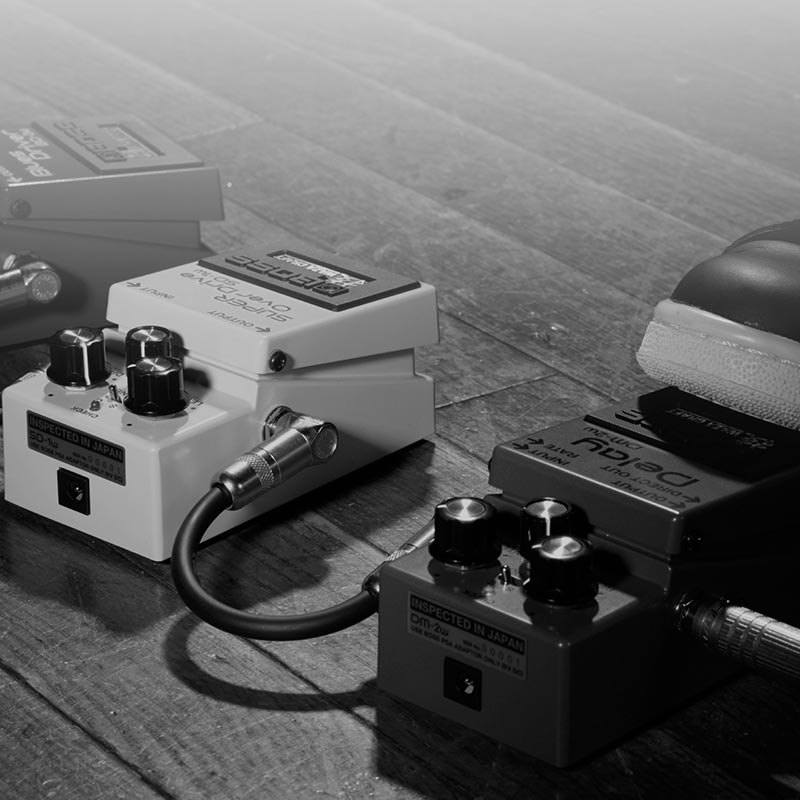Bucket Brigade: Introducing the old-school circuitry behind the new BOSS Waza Craft DM-2W Delay
You’ve probably heard about the new BOSS Waza Craft series: a fistful of special-edition stompboxes that walk the tightrope between vintage tone and razor-edge operation. But if you’ve investigated the BOSS DM-2W Delay, it’s possible you’ve been left confused by references to ‘bucket brigade device’ (BBD). If so, here’s our wham-bam explanation of what’s going on under the bonnet, and why discerning delay fans rate this unique circuitry so
Bucket Brigade: Introducing the old-school circuitry behind the new BOSS Waza Craft DM-2W Delay
You’ve probably heard about the new BOSS Waza Craft series: a fistful of special-edition stompboxes that walk the tightrope between vintage tone and razor-edge operation. But if you’ve investigated the BOSS DM-2W Delay, it’s possible you’ve been left confused by references to ‘bucket brigade device’ (BBD). If so, here’s our wham-bam explanation of what’s going on under the bonnet, and why discerning delay fans rate this unique circuitry so highly.
Bucket Brigade Device – that’s a bit of a weird name, isn’t it…?
There’s actually a bit of history behind it. As unlikely as it sounds, BBD circuitry takes its name from the bad old days of fire-fighting. With hoses yet to be invented, the best way to put out a blaze was to organise a queue of firemen, each holding a bucket, and transfer a slug of water, bucket-to-bucket, down the line from the river to the burning building. Of course, every time someone poured the water into their neighbour’s pail, a little bit got spilt…
Fascinating. But what’s that got to do with delay pedals?
We’re getting to that. Obviously, BBD delays don’t involve fire, water or buckets. But when this circuitry first appeared in the late-1960s – shortly before being incorporated into groundbreaking pedals like the original BOSS DM-2 – it shared a similar concept. The basic principle of a BBD circuit is that your incoming guitar signal moves along through a chain of capacitors, each of which briefly stores it, before passing it onto the next one (meanwhile, an onboard timer determines how long the capacitors hold the signal for).
What effect did that have?
Capacitors are fallible old-school components, so the longer they store a guitar signal, and the more links in the chain, the more leakage of the high frequency occurs. As a result, BBD pedals in days gone by could only cope with short delay times without the sound falling apart – which partly explains the rise of more flexible digital delays like the world-beating BOSS DD series.
So why would I want leaky old-school technology?
Because when BBD is done right, it sounds incredible (which is why some digital delays actually model the characteristics of the old BBD units). The twist is that the inherent inefficiency of BBD circuitry gives these delay pedals a unique character and colour that means many punters actually favour them over their slicker digital counterparts. Fans of BBD insist that with the high frequencies rolled off, the resulting delay effect is warmer, more organic and unbeatably mellow, sitting back in the mix, rather than monopolising or becoming the ‘main event’ in your sound. Stomp the BOSS DM-2W Delay and you’ll see what all the fuss is about, with this new pedal’s Standard mode giving you a totally faithful reproduction of the original BOSS DM-2 sound.
But I’m a sonic maverick – I don’t want to be limited to short delay times…
Don’t sweat it: the BBD concept might remain, but the functionality has leapt ahead. As such, the new BOSS DM-2W Delay is a flexible BBD pedal designed for any scenario you care to throw at it, offering delay times anywhere between 20-300ms (in Standard mode) and over twice that (in Custom mode). Operation comes via three intuitive dials, and unlike the original DM-2, this new Waza Craft stompbox lets you control the delay rate via expression pedal and Direct Out. In the studio or on the stage, you can instantly unlock delay effects from a subtle bathroom shimmer to a ping-ponging stadium slapback.
That’s great. But I’ve heard that BBD delays are expensive…?
Well, that’s certainly the stereotype. Given that it’s fiddlier to assemble than a digital circuit, BBD technology has traditionally cost more, and with the original BOSS DM-2 having ceased production back in 1984, original units now change hands for eye-watering prices on web auction sites. The good news is that, in 2014, the new BOSS DM-2W Delay retails for circa £135 online, meaning that you can snap one up without – ahem – delay.
